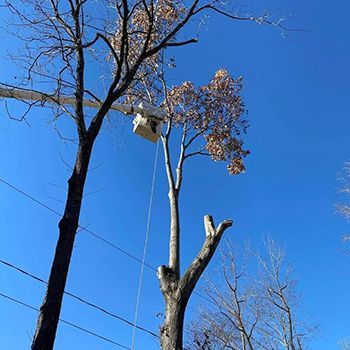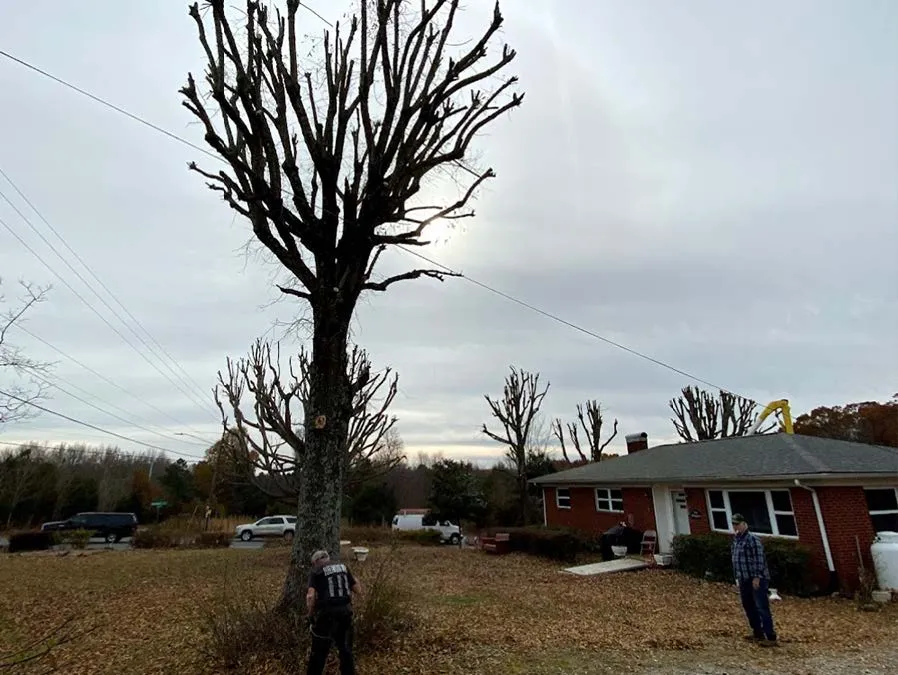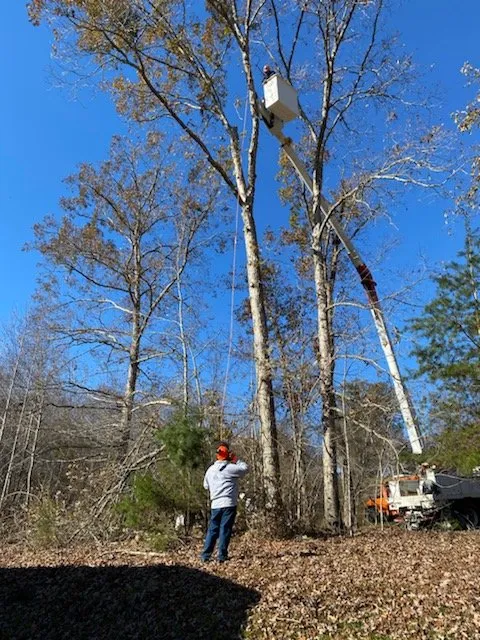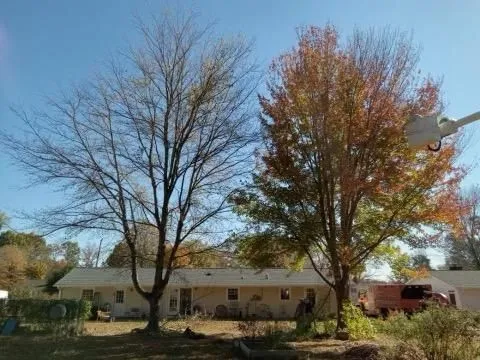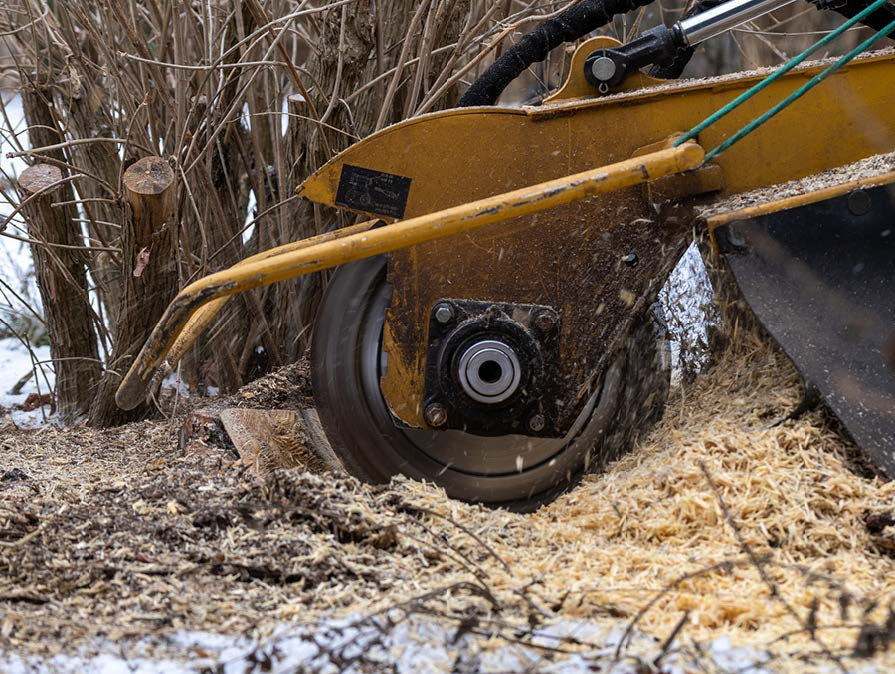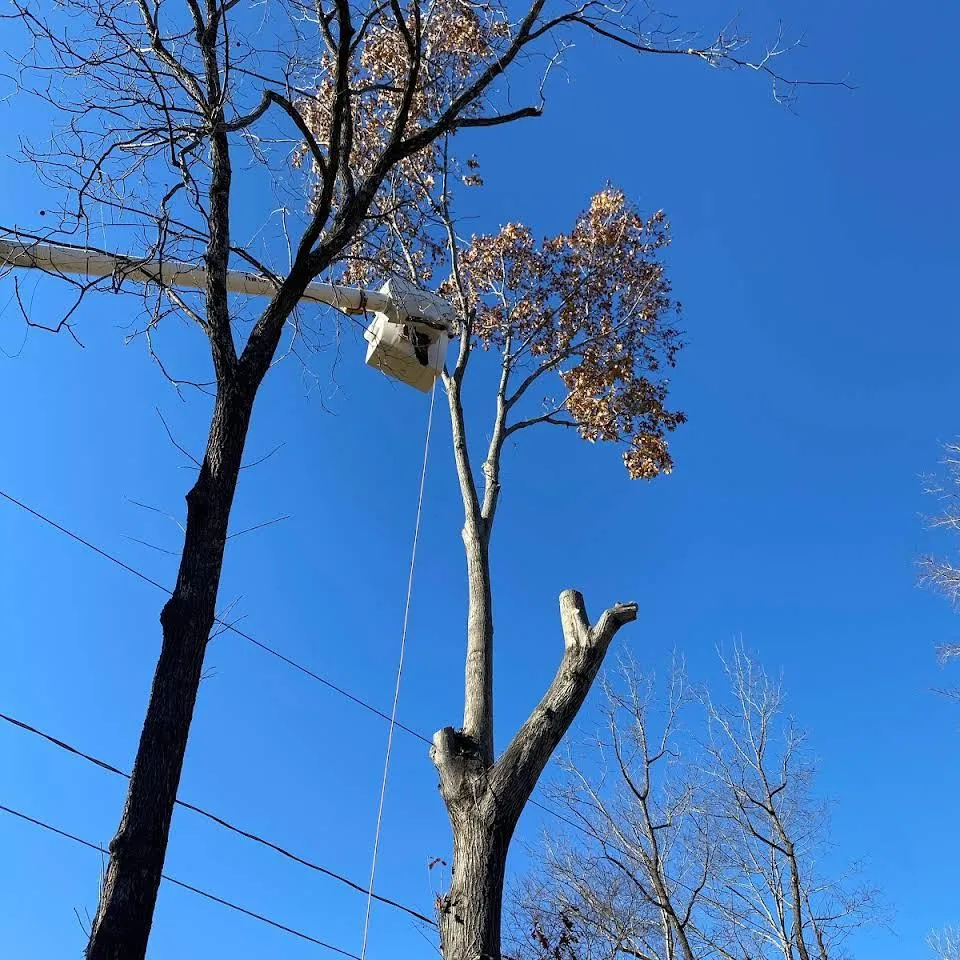The Little Beetles that Do Huge Damage: Warning Signs of an Emerald Ash Borer Infestation
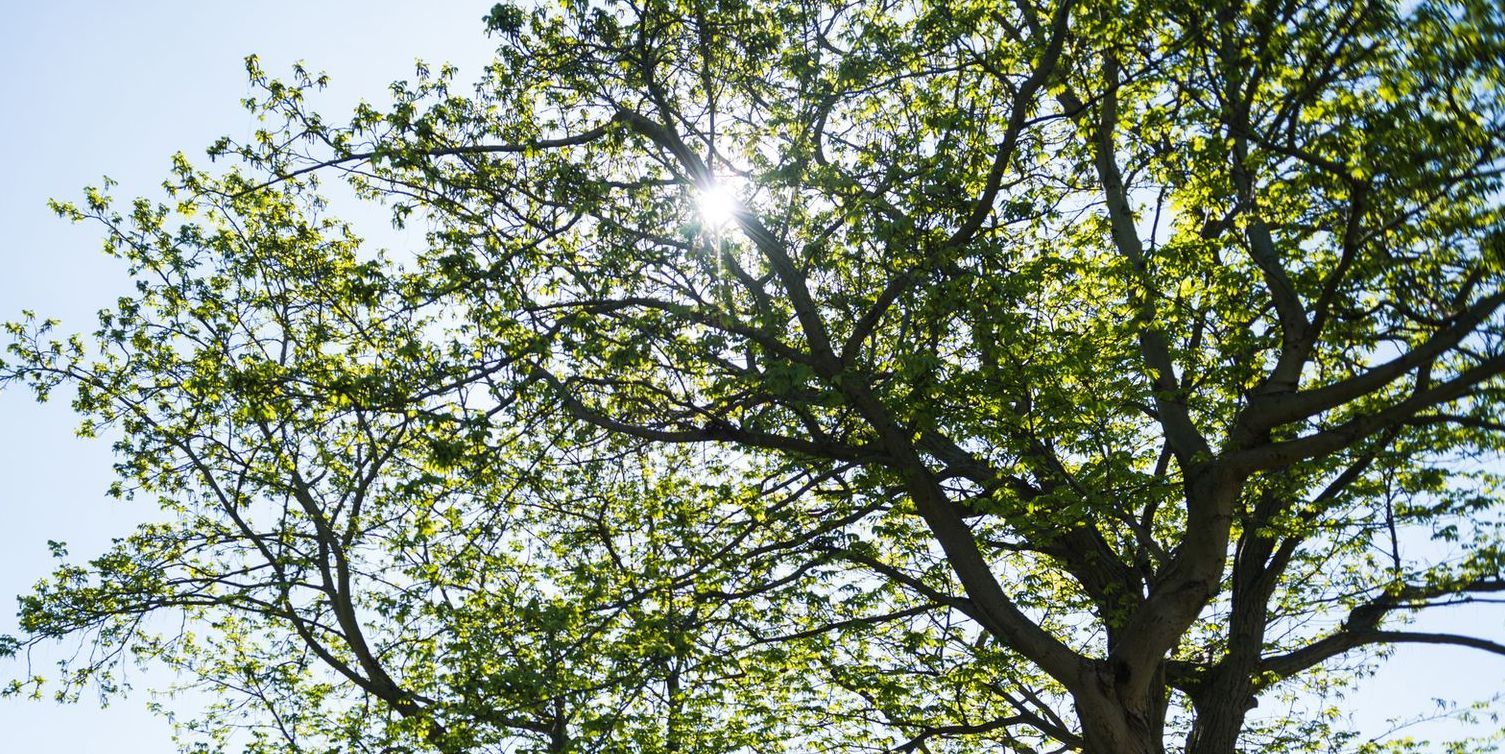
The emerald ash borer (Agrilus planipennis) is a small but devastating green beetle that poses a significant threat to ash trees in North Carolina and elsewhere. Originating from Asia, this invasive species has spread rapidly, causing widespread damage to ash tree populations. Identifying the signs of an emerald ash borer infestation is crucial for early detection and effective management. At Ingram’s Tree Service, our local arborists can identify affected trees and then determine the best course action for the situation. Here are five signs of emerald ash borers.
Thinning Canopy
In many cases, one of the early signs of an emerald ash borer infestation is a thinning canopy in ash trees. As the larvae tunnel beneath the bark, they disrupt the flow of water and nutrients within the tree, leading to a reduction in foliage. Watch out for branches that appear to be losing leaves or exhibiting premature leaf drop, especially in the upper portions of the tree.
D-Shaped Exit Holes
Once the adult emerald ash borers emerge from the tree, they leave distinct D-shaped exit holes in the bark. These small, rounded holes are a hallmark of infestation and are typically about 1/8 inch in diameter.
Splitting Bark and Epicormic Shoots
As emerald ash borers disrupt the nutrient flow within the tree, the bark may split vertically. This can be observed on the trunk and major branches. Also, the stress caused by infestation may prompt the tree to produce epicormic shoots, which are small branches that sprout from the trunk and larger branches in an attempt to compensate for the loss of canopy.
Dieback from the Top Down
In advanced stages of emerald ash borer infestation, ash trees often exhibit dieback starting from the top and progressing downward. As the beetles continue to damage the tree's vascular system, the overall health of the tree declines, resulting in a gradual loss of branches and foliage.
Increased Woodpecker Activity
Woodpeckers are predators of emerald ash borers, and heightened woodpecker activity can be a sign of infestation. These birds are attracted to the larvae beneath the bark and will peck holes in an attempt to feed on them.
Arborist in High Point, NC
When you need an arborist in High Point and the surrounding area, contact Ingram’s Tree Service at
(336) 471-4934. Feel free to give us a call today to request a free tree services estimate in High Point!
